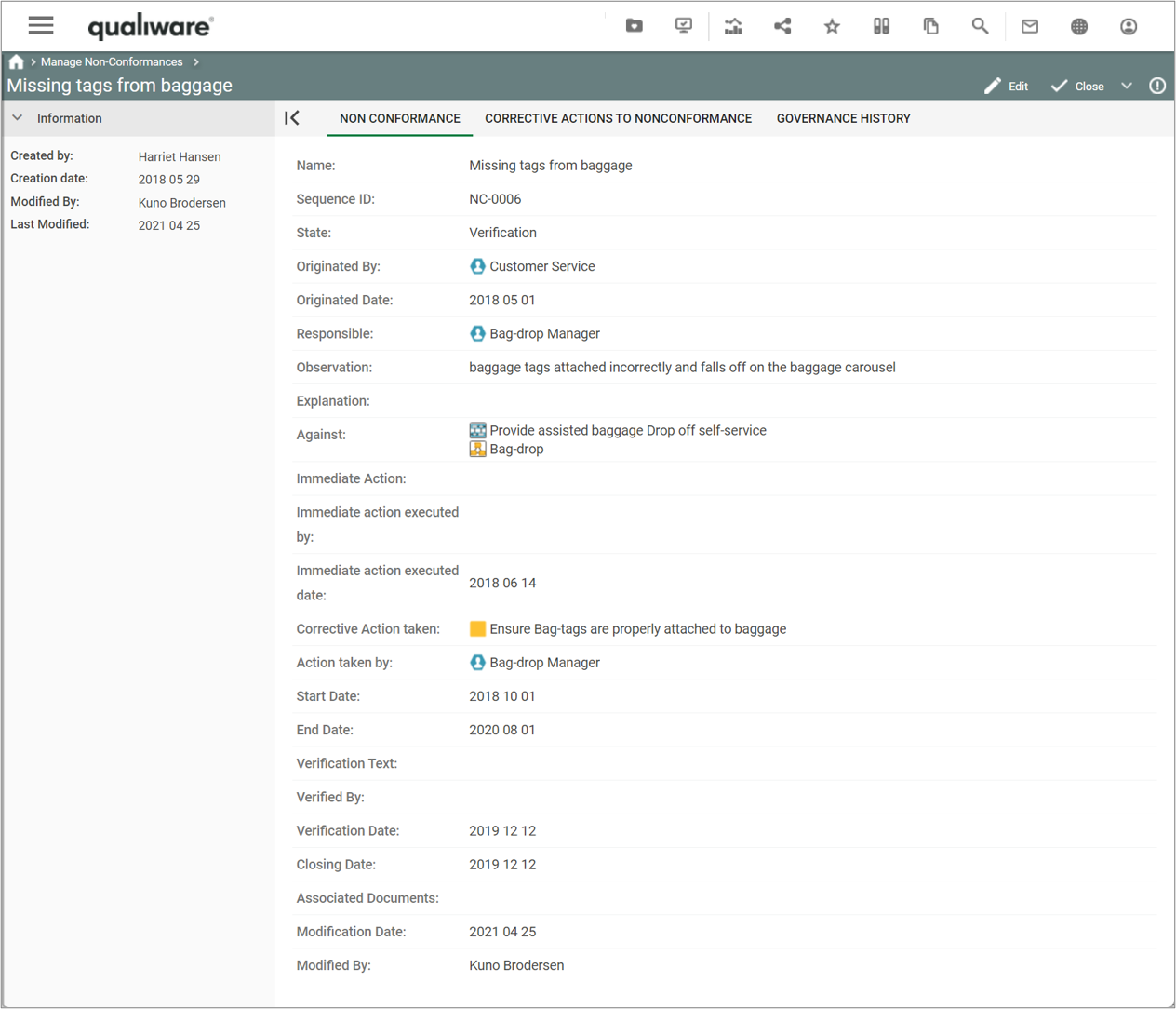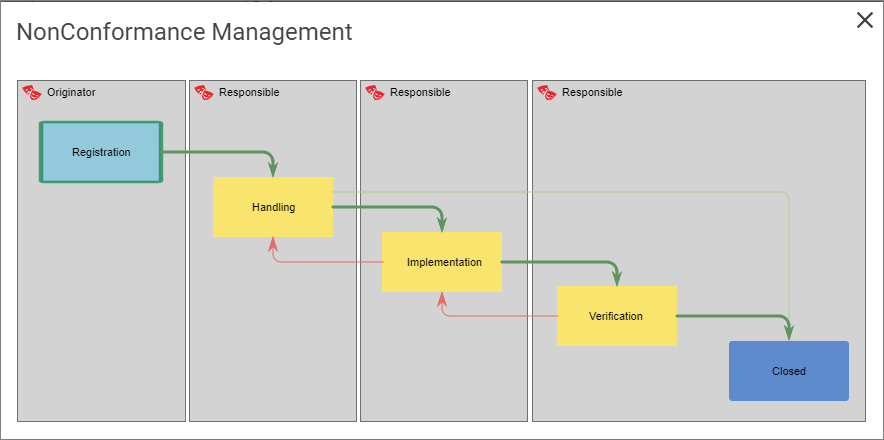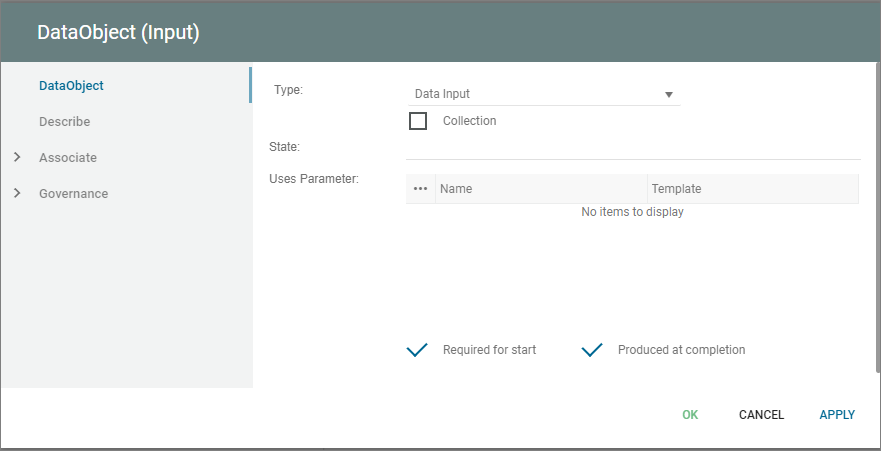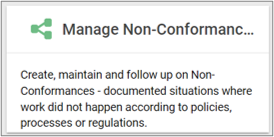A definition is used to give a long precise definition of a specific subject.
Archives: Templates
Templates and model types in the QualiWare platform.
Decision:DMN
In Decision Model and Notation (DMN), the “Decision” symbol is used to represent a point in the decision-making process where a choice is made based on the available data and knowledge. A Decision element represents a logical outcome of the decision-making process.

The Decision Template is used in the Decision Requirements Diagram and is a part of the Decision Model Notation (DMN) from OMG.
Decision
A branching mechanism that determine the possible paths of execution based on user specified conditions.
Data Type
In the context of a Class Diagram, a datatype is a specialized kind of classifier that represents a simple, non-composite type of data. It is used to define the types of attributes, parameters, and return values for classes and their operations. Unlike classes, datatypes typically don’t have operations or behaviors associated with them, focusing primarily on the structure of the data.
When creating a Class Diagram, you can use predefined datatypes (provided by the modeling tool or the underlying modeling language, such as UML) or define your own custom datatypes to represent specific data structures needed for your system. These custom datatypes can then be used as templates for defining the types of attributes or operation parameters and return values in your classes.
For example, consider a Class Diagram for a software system that manages books in a library. You might define a custom datatype called “ISBN” to represent the International Standard Book Number format. In this case, the “ISBN” datatype can be used as a template for the “isbn” attribute in the “Book” class. This helps ensure consistent representation and interpretation of ISBN data across the system.
Data Relation
A DataRelation shows the relation between two data entities.
At each end of a DataRelation there is a DataEntity, which automatically appears in the ‘From’ and ‘To’ fields in the DataRelation dialog. The roles of the DataEntities can be described and the cardinality. If a one-to-many DataRelation is created, QualiWare Lifecycle Manager will automatically update the relevant DataEntity with a foreign key.
Node ArchiMate
Nodes are active structure elements that perform technology behavior and execute, store, and process technology objects such as artifacts. For instance, nodes are used to model application platforms, defined by the TOGAF framework as: “a collection of technology components of hardware and software that provide the services used to support applications”.
Nodes can be interconnected by paths. A node may be assigned to an artifact to model that the artifact is deployed on the node.
The name of a node should preferably be a noun. A node may consist of sub-nodes.
Artifacts deployed on a node may either be drawn inside the node or connected to it with an assignment relationship.
Node properties
The Node tab
| Property | Metamodel name | Description |
| Short description | ShortDescription | |
| Implements | Implements | Links to: All templates. |
| BreaksDownTo | BreaksDownTo | Links to: All templates. |
Node Relation
Used for connecting the symbols in a deployment diagram.
NodeRelation properties
The NodeRelation tab
| Property | Metamodel name | Description |
| Show on diagram | ShowOnDiagram | Initial value is on. |
| Short description | ShortDescription |
The Extensions tab
| Property | Metamodel name | Description |
| Stereotype | Stereotype | Links to: Stereotype. |
| Constraints | HasConstraints | Links to: Constraint. |
| Tagged values | HasTaggedValues | Links to: TagDefinition. |
The Ext From tab
| Property | Metamodel name | Description |
| Stereotype | FromStereotype | Links to: Stereotype. |
| Constraints | FromConstraints | Links to: Constraint. |
| Tagged values | FromTaggedValues | Links to: TagDefinition. |
The Ext To tab
| Property | Metamodel name | Description |
| Stereotype | ToStereotype | Links to: Stereotype. |
| Constraints | ToConstraints | Links to: Constraint. |
| Tagged values | ToTaggedValues | Links to: TagDefinition. |
Non Conformance
A Non-Conformance is used to document findings of discrepancies between a Regulation or a documented procedure and the actual situation or activity carried out in the organization.
A Non-Conformance can be related to one ore more object(s) in the repository.
Below is a web-view of an example of a Non-Conformance, showing the essential properties (this can be configured).

The Non-Conformance above is in state Verification, which is the last stage in the standard governance workflow for “Non-Conformances” (this flow can be configured if needed, click here to read more about governance workflows.)

NonConformance properties
The NonConformance tab
| Property | Metamodel name | Description |
| Observation | Observation | The precise observation. |
| Explanation | Explanation | Why the observation is a non conformance. |
| Against | Against | Relations to standard or procedures not conformed to. Links to: Activity, BusinessConnection, FreeHandDiagram, InterestGroup, OrganizationUnit, Person, Position, Regulation, Role, WorkFlowDiagram, WorkModel. |
| Date | OriginatedDate | The date of origin for this NonConformance. |
| Originated By | OriginatedBy | Relation to the originater of this NonConformance. Links to: InterestGroup, OrganizationUnit, Person, Position, Role. |
| Priority | Priority | Priority for handling this NonConformance. Choices are: |
| Status | Status | Status for this NonConformance Choices are: |
| Responsible | HasResponsible | Link to party responsible for handling this non conformance Links to: InterestGroup, OrganizationUnit, Person, Position, Role. |
The Recommend tab
| Property | Metamodel name | Description |
| Rec. Date | RecommendedDate | CreationDate of this recommendation. |
| Recommended By | RecommendedBy | The Person/Group responsible for this recommendation. Links to: InterestGroup, OrganizationUnit, Person, Position, Role. |
| Due date | DueDate | Due date for action |
| Estimated Resource Requirement | EstimatedResourceRequirement | Estimated cost to carry out the corrective action |
| Recommended action | RecommendedAction | Recommended action for this NonConformance. |
The Action taken tab
| Property | Metamodel name | Description |
| Start Date | StartDate | Starting date. |
| End Date | EndDate | Ending date. |
| Action taken by | ActionTakenBy | Relation to person/group who executed the action. Links to: InterestGroup, OrganizationUnit, Person, Position, Role. |
| Cost of Non Conformance | CostOfNonConformance | Cost caused by the non conformance |
| Resources Spent | ResourcesSpent | Actual cost of corrective action |
| Corrective Action Taken | CorrectiveActionTaken | A description of the corrective action taken. |
| Closing date | ClosingDate | The closing date for this NonConformance |
See more about management of non-conformances here.
Data Object
Data Objects provide information about what Activities require to be performed and/or what they produce, Data Objects can represent a singular object or a collection of objects. Data Input and Data Output provide the same information for Processes.
![]()
In BPMN, a Data Object is considered an Artifact and not a Flow Object. They are considered an Artifact because they do not have any direct effect on the Sequence Flow or Message Flow of the Process, but they do provide information about what the Process does. That is, how documents, data, and other objects are used and updated during the Process. While the name Data Object may imply an electronic document, they can be used to represent many different types of objects, both electronic and physical.
In general, BPMN will not standardize many modeling Artifacts. These will mainly be up to modelers and modeling tool vendors to create for their own purposes. However, equivalents of the BPMN Data Object are used by Document Management oriented workflow systems and many other process modeling methodologies. Thus, this object is used enough that it is important to standardize its shape and behavior.
As an Artifact, Data Objects generally will be associated with Flow Objects. An Association will be used to make the connection between the Data Object and the Flow Object. This means that the behavior of the Process can be modeled without Data Objects for modelers who want to reduce clutter. The same Process can be modeled with Data Objects for modelers who want to include more information without changing the basic behavior of the Process.
In other cases, the same Data Object will be shown as being an input, then an output of a Process. Directionality added to the Association will show whether the Data Object is an input or an output. Also, the state attribute of the Data Object can change to show the impact of the Process on the Data Object.
State is an optional attribute that indicates the impact the Process has had on the Data Object. Multiple Data Objects with the same name MAY share the same state within one Process. Examples of state could be: initiated, logged, registered.
The Uses Parameter field can be used to define specific parameters, values, or conditions that must exist to permit the DataObject to be created or used as input to a process/activity.
The Required for Start checkbox in QualiWare can specify whether or not the DataObject MUST exist for the Activity to start.
The Produced at Completion checkbox can be checked if the DataObject is output of an Activity and produced at the completion of the work associated with the Activity.

Data Flow
A DataFlow is connection on a DataFlowDiagram through which information flows. A DataFlow must always be connected to a Process in one end.
